
Hordeum is a genus of annual and perennial plants in the grass family. They are native throughout the temperate regions of Africa, Eurasia, and the Americas.
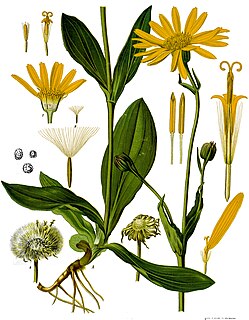
Arnica is a genus of perennial, herbaceous plants in the sunflower family (Asteraceae). The genus name Arnica may be derived from the Greek arni, "lamb", in reference to the plants' soft, hairy leaves. Arnica is also known by the names mountain tobacco and confusingly, leopard's bane and wolfsbane—two names that it shares with the entirely unrelated genus Aconitum.
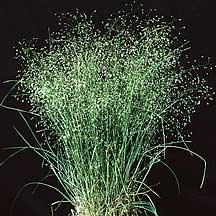
Oryzopsis is a genus of Chinese and North American plants in the grass family. Species from this genus are commonly called ricegrass.
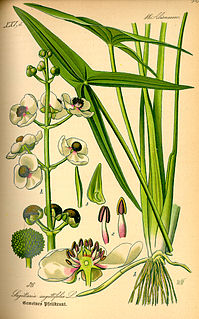
Sagittaria is a genus of about 30 species of aquatic plants whose members go by a variety of common names, including arrowhead, duck potato, katniss, Omodaka, swamp potato, tule potato, and wapato. Most are native to South, Central, and North America, but there are also some from Europe, Africa, and Asia.

Leymus is a genus of plants in the grass family Poaceae (Gramineae). It is widespread across Europe, Asia, and the Americas.

Sparganium (bur-reed) is a genus of flowering plants, described as a genus by Linnaeus in 1753. It is widespread in wet areas in temperate regions of both the Northern and Southern Hemispheres. The plants are perennial marsh plants that can grow to 3.5 m, with epicene flowers.

Streptopus amplexifolius is a species of flowering plant in the family Liliaceae, native to North America, Europe and Asia.

Mentha canadensis is a species of mint native to North America and the eastern part of Asia. In North America, it is commonly known as Canada mint, American wild mint, and in Asia as Chinese mint, Sakhalin mint, Japanese mint, and East Asian wild mint. The flowers are bluish or have a slight violet tint. The plant is upright, growing to about 4–18 in (10–46 cm) tall. Leaves grow opposite from each other, and flower bunches appear in the upper leaf axils. The mint grows in wet areas but not directly in water, so it will be found near sloughs, and lake and river edges. Plants bloom from July to August in their native habitats.
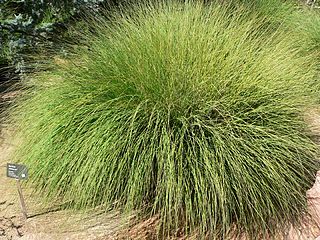
Muhlenbergia is a genus of plants in the grass family.

Glyceria is a widespread genus of grass family common across Eurasia, Australia, North Africa, and the Americas.

Puccinellia is a genus of plants in the grass family, known as alkali grass or salt grass.

The following outline is provided as an overview of and topical guide to Canada:

Vaccinium ovalifolium is a plant in the heath family having three varieties, all of which grow in northerly regions, including the subarctic.
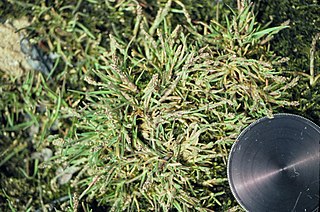
Phippsia is a genus of Arctic and alpine plants in the grass family.

Galium trifidum is a species of flowering plant in the coffee family, known by the common name three-petal bedstraw. It grows widespread in the arctic, temperate and subtropical regions of the Northern Hemisphere: northern and central Asia, northern and eastern Europe and much of North America.

Arctagrostis is a genus of Arctic and Subarctic plants in the grass family, native to colder parts of Europe, Asia, and North America.
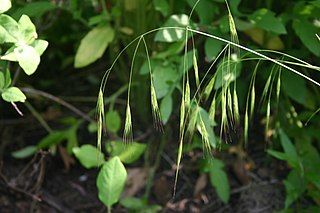
Schizachne is a genus of Eurasian and North American plants in the grass family. The only accepted species is Schizachne purpurascens, commonly called false melic. Three subspecies are recognized:
Galium kamtschaticum, known as Kamchatka bedstraw or boreal bedstraw, is a plant species in the Rubiaceae, named for the Kamchatka Peninsula on the Pacific Coast of Russia. The species is native to northeastern Asia and northern North America: Russia, northeastern China, Korea, Japan, Alaska, Canada, and the northern part of the contiguous United States.

Piptatheropsis is a genus of plants in the grass family.

Juncus triglumis, called the three-flowered rush, is a species of flowering plant in the genus Juncus, native to the subarctic and subalpine Northern Hemisphere. It is typically found in calcareous tundra habitats and arcto-alpine fens. It is often found in association with Carex atrofusca and Carex bicolor in the so-called Caricion bicolori-atrofuscae alliance.



















